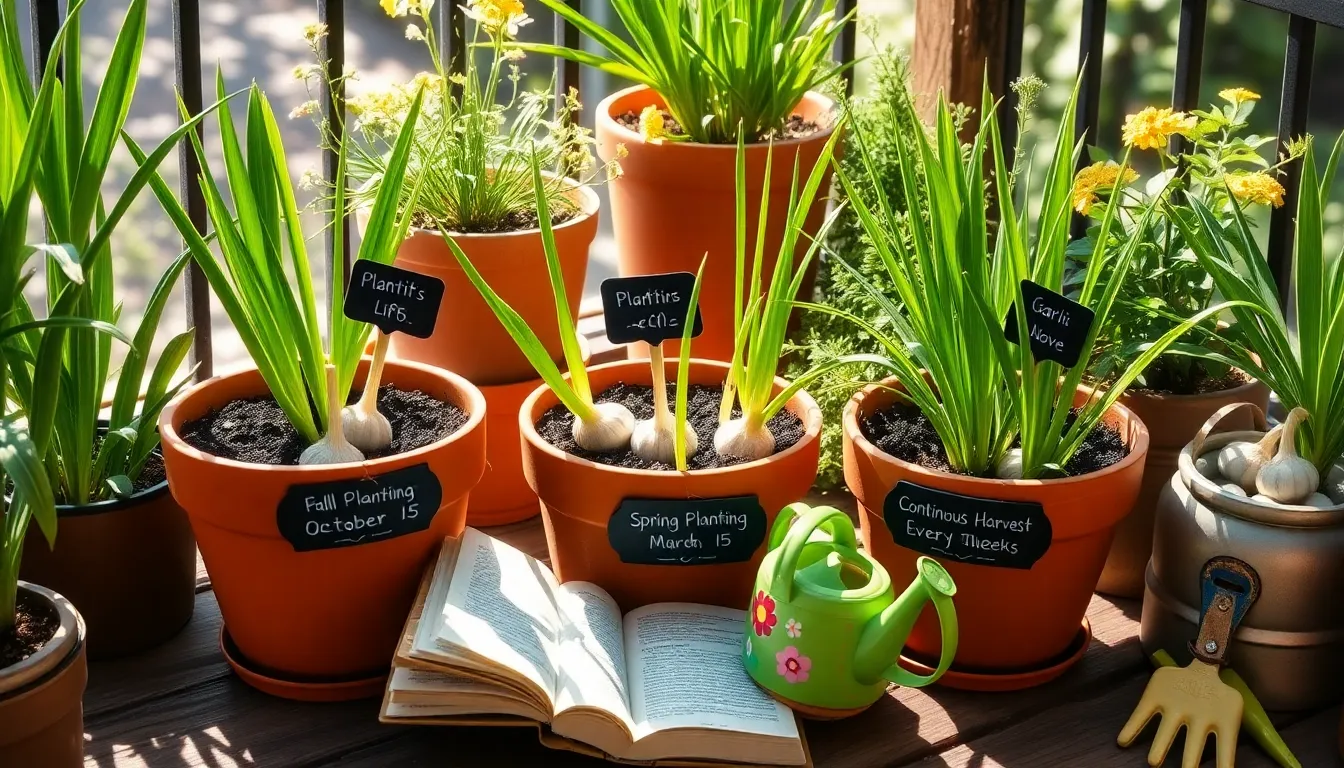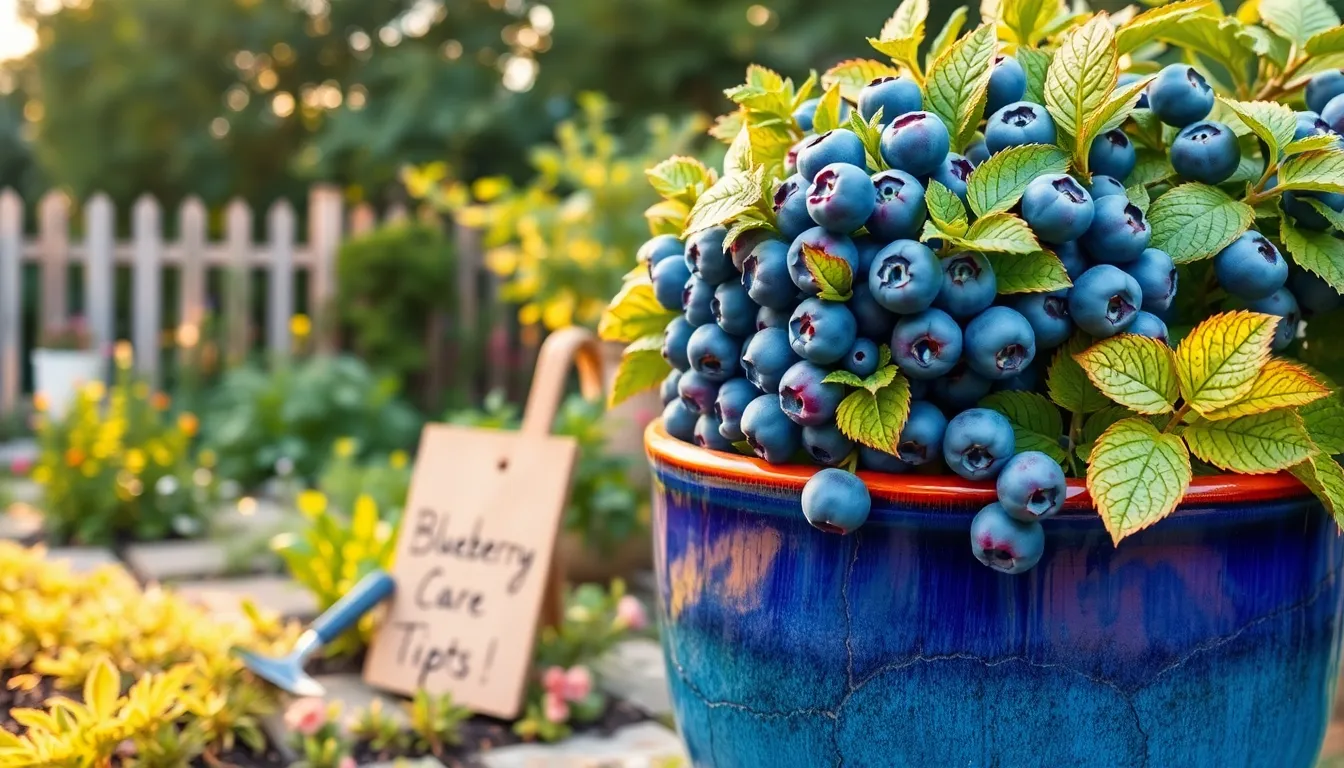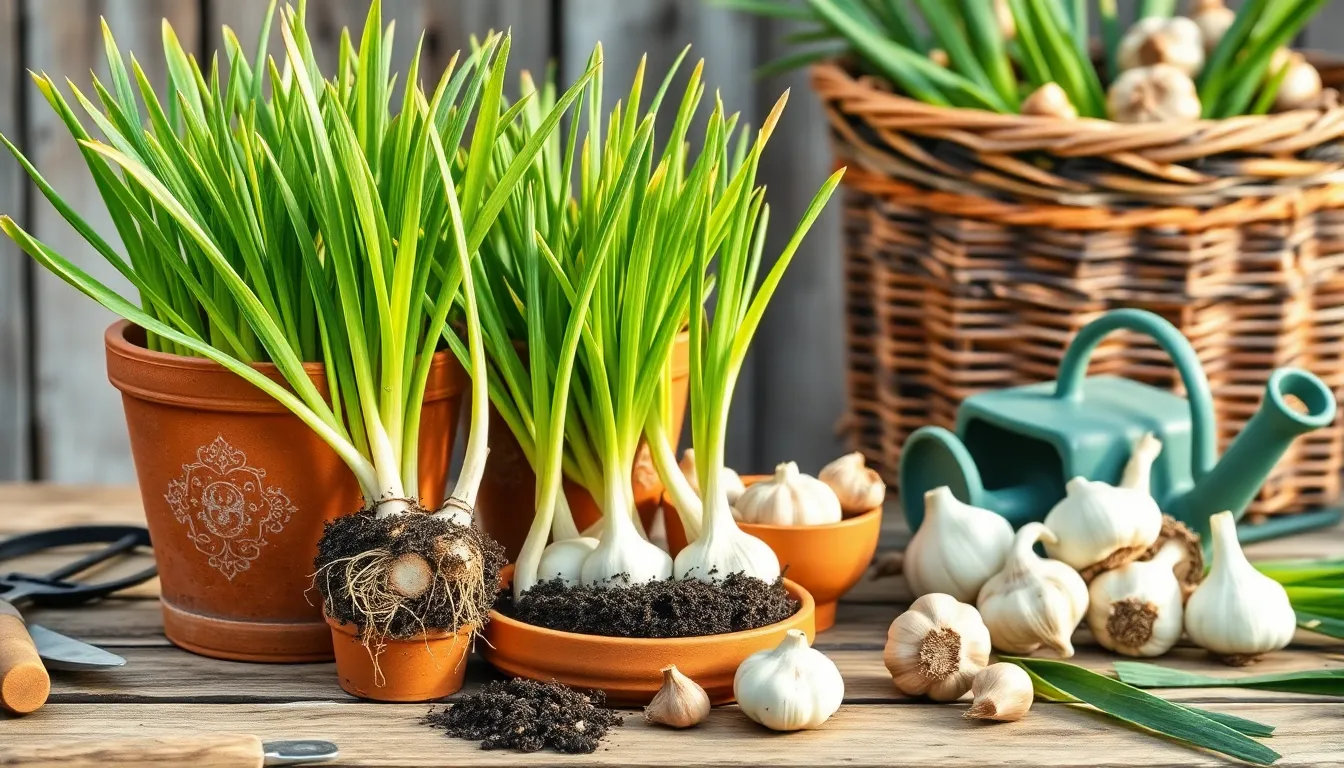Imagine stepping onto your patio on a sunny morning, the air filled with the sweet scent of blooming flowers, and there they are—your very own blueberry plants, thriving in their pots and promising a delicious harvest. Whether you’re a beginner gardener just discovering the joy of homegrown produce or an experienced green thumb looking to expand your botanical repertoire, growing blueberries in pots can be a rewarding endeavor that fits right into your outdoor space, no matter how modest.
Blueberries are not only a delightful addition to your culinary adventures; they are also packed with antioxidants and bring a burst of color to your garden. In this article, you’ll learn how to select the right blueberry variety for your container garden, understand the soil and sunlight conditions these berries crave, and discover practical tips for nurturing your plants through each season. Let’s dive into the details, ensuring that your blueberry-growing journey is both fruitful and enjoyable, making even the smallest urban garden a bountiful paradise.
Select Suitable Blueberry Varieties
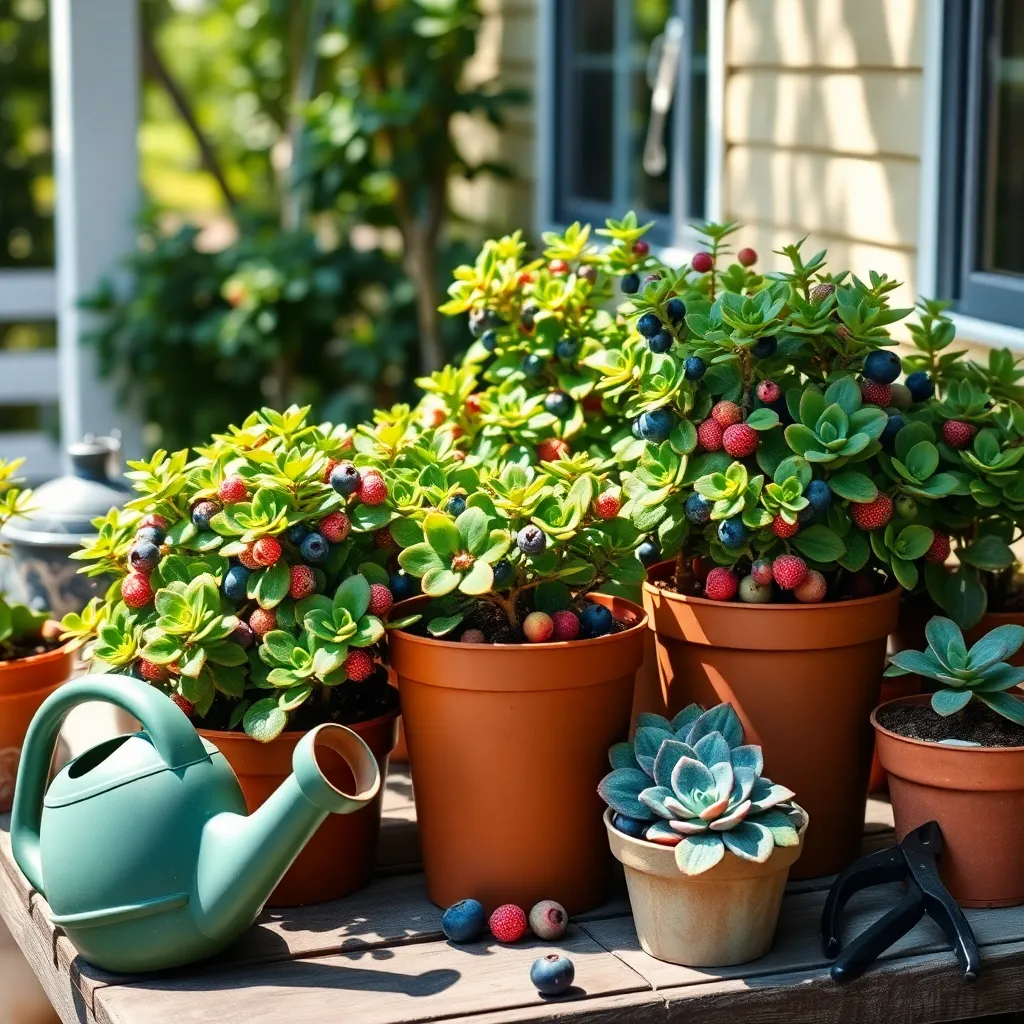
When choosing blueberry varieties for pot cultivation, consider options like ‘Top Hat’ or ‘Sunshine Blue,’ which are well-suited for container growth. These dwarf varieties not only thrive in limited space but also produce abundant fruit, making them ideal for small garden settings.
Ensure your selected variety is compatible with your regional climate to maximize success. Many blueberries require a certain number of chill hours, so check the requirements of each variety and match them to your local conditions.
Opt for a mix of early, mid, and late-season varieties to extend your harvest period. This strategy not only maximizes fruit production throughout the growing season but also provides a continuous supply of fresh blueberries.
For optimal growth, plant your blueberries in pots using a well-draining, acidic potting mix. A mix designed for acid-loving plants, such as azaleas or rhododendrons, is a good choice, ensuring the pH remains around 4.5 to 5.5.
Prepare Well-Draining Potting Mix
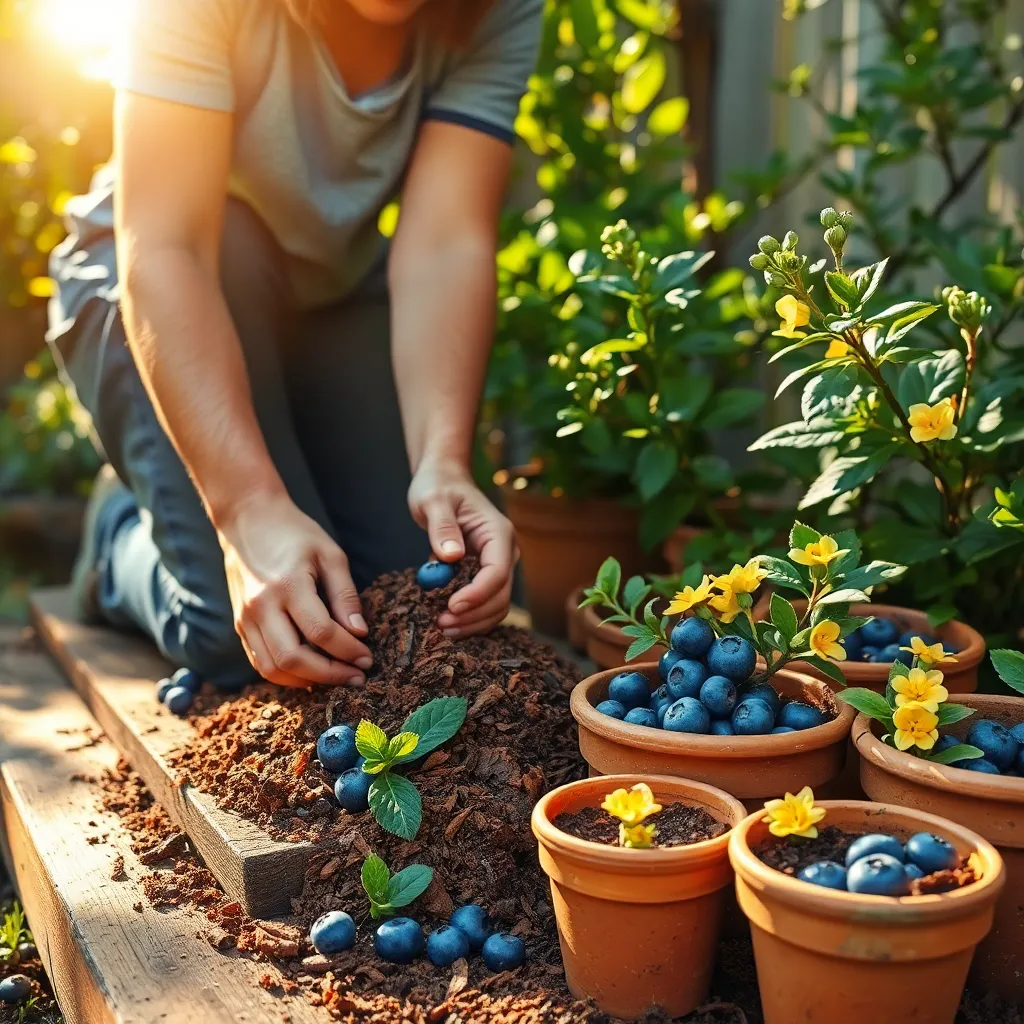
To ensure your blueberries thrive in pots, it’s crucial to prepare a well-draining potting mix. Blueberries prefer acidic soil, so aim for a pH of 4.5 to 5.5, which you can achieve by using a mix of peat moss, pine bark, and perlite.
Begin by mixing equal parts of peat moss and pine bark to create a base for your potting mix. Adding perlite or coarse sand will improve drainage, preventing waterlogged roots that can harm blueberry plants.
For those new to gardening, a simple recipe is to combine one part peat moss, one part pine bark, and one part perlite. More experienced gardeners might add a small amount of organic compost for additional nutrients, but be cautious not to add too much as it may alter the soil’s pH.
It’s also beneficial to periodically test the pH of your potting mix to ensure it remains within the optimal range. Consider using a pH meter or testing kit, which are readily available at garden centers, to monitor the soil conditions regularly.
Choose Appropriately Sized Containers
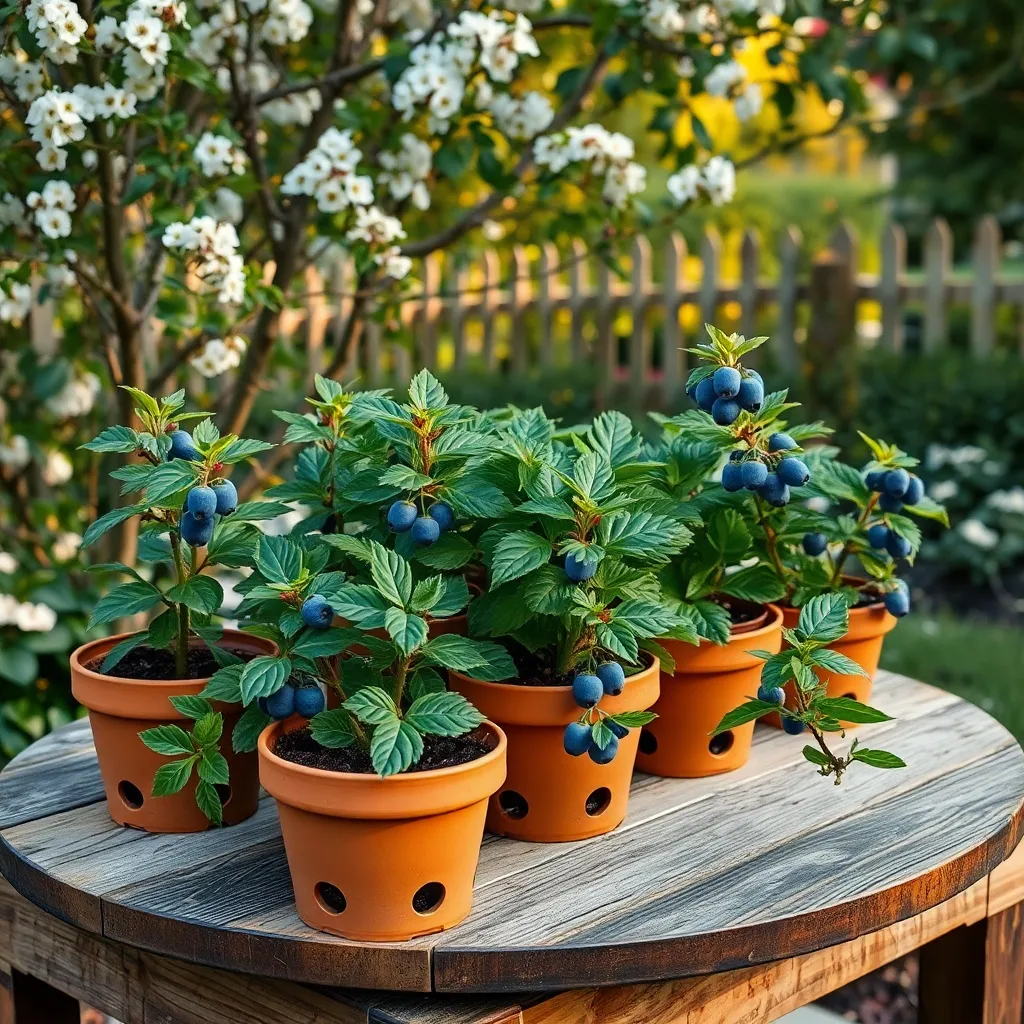
When growing blueberries in pots, selecting the right container size is crucial for the plants’ health and productivity. Start with a pot that is at least 16 to 18 inches in diameter and equally deep, as this provides ample room for root growth and stability.
Blueberries have shallow root systems, so a wider container is preferable to a deeper one. As your plant grows, you might need to upgrade to a larger pot, ideally one that is 20 to 24 inches in diameter, to accommodate the expanding root system.
It’s important to ensure that the pot has adequate drainage holes to prevent waterlogging, which blueberries are sensitive to. Consider using a container with a drainage tray to catch excess water and protect surfaces.
For added convenience, opt for lightweight pots made from materials like plastic or fiberglass, which are easier to move and manage. If you live in a colder climate, these materials also provide better insulation for your plants during winter months.
Plant Blueberries at Correct Depth
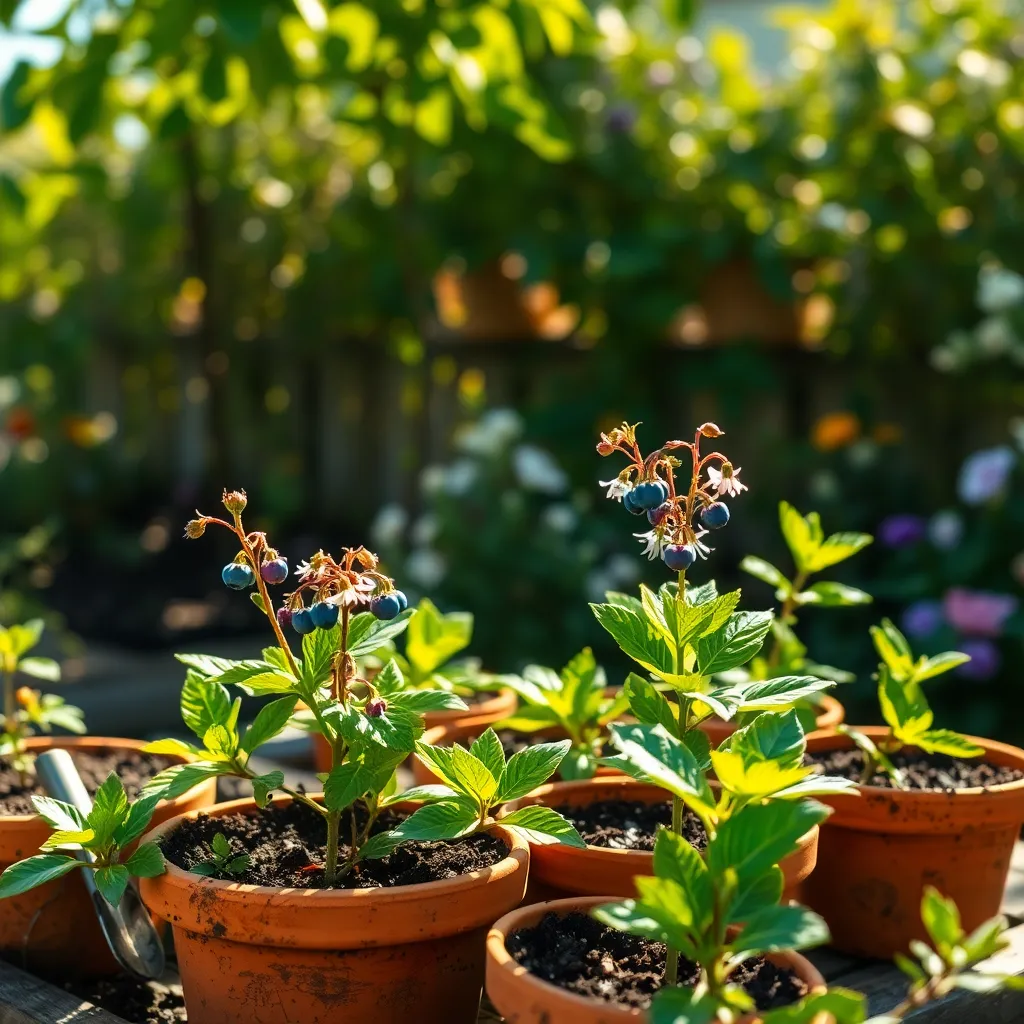
Proper planting depth is crucial for the healthy growth of blueberries in pots. When planting, ensure the root ball is level with the surface of the potting mix to promote optimal root development.
Begin by filling your container with a high-quality, acidic potting mix specifically designed for acid-loving plants. Blueberries prefer a pH level between 4.5 and 5.5, so consider using a soil mix that contains peat moss, which naturally lowers pH.
Next, gently remove the blueberry plant from its nursery pot, taking care not to damage the roots. Loosen any tightly bound roots to encourage spreading, and place the plant in the center of the container.
Once positioned, fill the pot with additional potting mix, firming it gently around the plant to eliminate air pockets. Water thoroughly after planting to help settle the soil and remove any remaining air pockets, which ensures good root-to-soil contact.
Ensure Optimal Watering and Sunlight
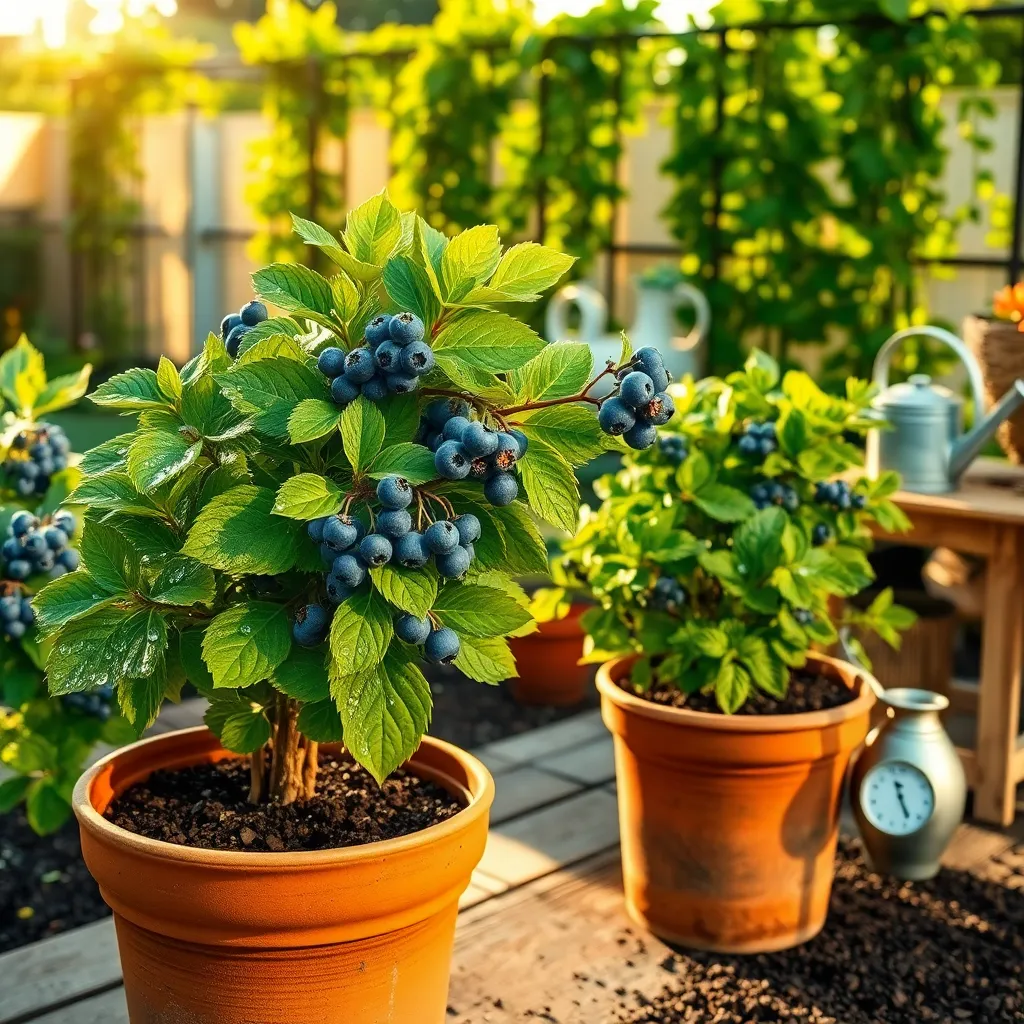
To ensure your potted blueberries thrive, it’s crucial to provide optimal watering. Blueberries prefer moist but well-drained soil, so water them thoroughly when the top inch of soil feels dry, usually once a week.
Overwatering can lead to root rot, so be mindful not to let the pots sit in water. Consider using a pot with drainage holes and a saucer to catch excess water, allowing you to monitor and manage water levels effectively.
In addition to careful watering, sunlight is key for healthy blueberry growth. Blueberries need a minimum of six to eight hours of direct sunlight each day; placing your pots in a sunny spot like a south-facing patio is ideal.
If full sun isn’t an option, use reflective surfaces or place the pots near a light-colored wall to maximize the available light. For those in regions with intense afternoon sun, providing some afternoon shade can help prevent leaf scorch.
Monitor your blueberry plants regularly, as their watering needs may change with the seasons. During hot, dry spells, you may need to increase watering frequency, while in cooler, wet seasons, reduce it to prevent waterlogging.
Conclusion: Growing Success with These Plants
In nurturing blueberries in pots, we’ve explored five pivotal relationship concepts: communication, patience, nurturing, adaptability, and consistency. Just as blueberries demand specific soil, relationships thrive on open communication, understanding the needs of both partners. Patience is essential, as growth takes time, mirroring the gradual blossoming of trust and intimacy. Nurturing involves tending to emotional and practical needs, akin to ensuring our plants have adequate nutrients. Adaptability is crucial, as weathering life’s changes together strengthens bonds, much like adjusting to varying growth conditions. Lastly, consistency in care fosters resilience and flourishing, both in gardens and relationships.
Ready to cultivate a healthier relationship? Start today by scheduling a dedicated time for heartfelt communication with your partner—just like tending to your blueberries, it requires ongoing attention and care. Bookmark this article to keep these insights close at hand as you navigate your relationship journey. Remember, with dedication and love, your relationship can grow as beautifully as a well-tended blueberry plant. Embrace the future with optimism, knowing that the seeds of a thriving partnership are planted in the nurturing actions you take today.


